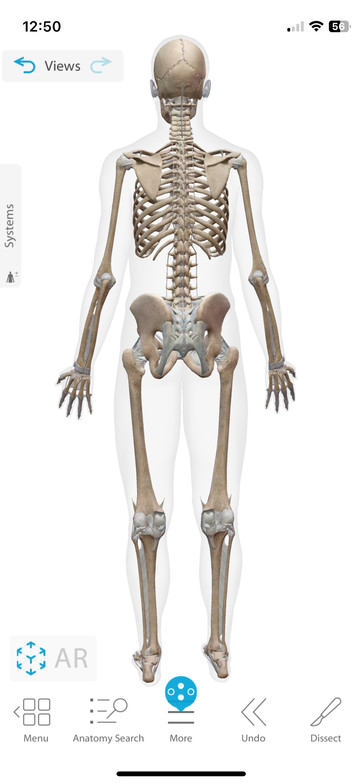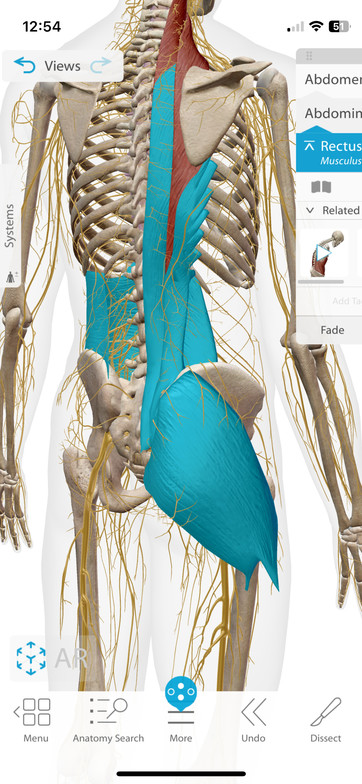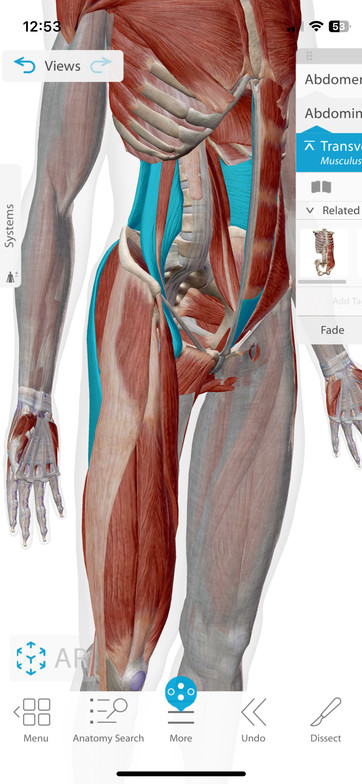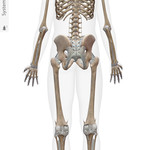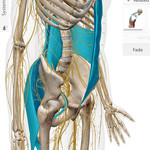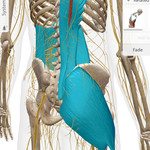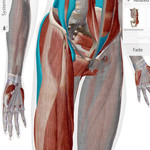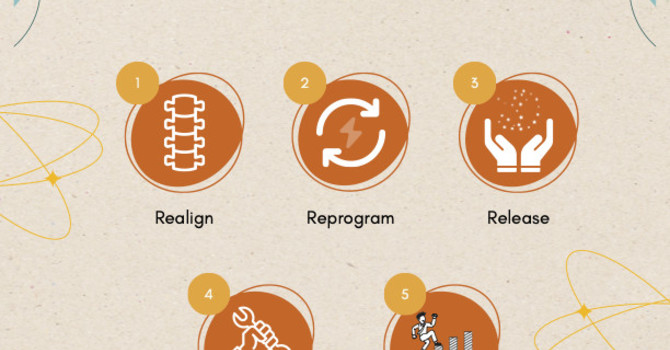The patient is a young active man and new father. He presents with chronic low back pain, pain into his Rt hip and sometimes down to his right foot
Findings:
Analysis using PDTR allows me to determine dysfunctional receptor feedback from body to brain.
In a sitting position, his right leg flexors as well as abs and low back muscles all weaken, which I found was related to signaling from vibratory receptors in his right Sacro-Iliac joint miscommunicating with pressure receptors in his abs (Rectus Abdominus).
Additionally, I found that his right inner Hamstring was overworking to compensate for underworking right low back muscles and large gluteus muscles. The Hamstrings were also being turned on too much by feedback of vibratory receptors and their corresponding pressure receptors in the deep low back muscles.
His right Psoas (which flexes the thigh) was over firing in response to under firing right low back (QL) and deep core muscles (Transverse Abdominus), also triggered by tap and stretch receptors of those muscles.
Furthermore, his gait patterning was off - when we walk, our opposite arm and leg swing, which is a complicated maneuver involving the nervous system. This in particular was being thrown off by stretch receptors in the ligaments of his left foot, which are also sensitive to gravity and pressure.
His spinal alignment was off as well, in his mid back and pelvis. Alignment:Thoracic, Sacrum, Ilium
Treatment:
I used chiropractic adjustments to safely restore proper alignment to his back and hips. I also used PDTR to quickly and safely correct muscle balance in his core, low back and pelvis.
Discussion:
Chiropractic Adjustments & Soft Tissue Work
A traditional chiropractic treatment usually involves adjustments of joints, and often soft tissue work to release tight muscles. Some soft tissue techniques which I utilize include
- ART - Active Release Technique, the gold standard specific fascial pin & stretch technique (I am full body certified)
- Graston - Fascial Scraping, with a beveled surgical steel tool (I don't use the actual Graston technique, but use the tools)
- Cupping (used in Chinese medicine, but as a chiropractor, applied rather as myofascial decompression to release fascia)
- Rocktape - Kineseotaping to add a consistent microdecompression to the affected area, giving the muscles feedback which helps them fire correctly as they reset.
Anatomy
This is important because the central nervous system beginning with the brain is regarded as the body’s master control system, and any interruption to this flow - from the brain to the spinal cord inside the spinal canal of the stacked vertebrae making up the spine - will result in altered communication and function in the body. Spinal nerves exit the spine between vertebrae through holes called foramen.
When spinal nerves leave the spinal cord, they branch, one nerve supplying a muscle and one supplying an organ. These nerves can be disrupted as they travel through tight muscles as well, and can lead to pain, neuralgia (tingling, numbness, burning), muscle weakness as well as organ dysfunction. Or they can lead to organ stress (stomach upset, bowel distress). In addition to a chiropractic adjustment, soft tissue work can be very helpful to release pressure along nerve pathways.
Integrative Chiropractic
As an integrative or functional chiropractor, I acknowledge that there is a dynamic, constant feedback loop between organs and muscles, as well as between opposite muscles. If you think about it for a moment, this is how we move: one set of muscles (i.e. your Glutes and Hamstrings) shut off while the opposite muscles (i.e. your Psoas and quads) turn on, allowing your leg to flex (lifting your thigh).
PDTR is an amazing technique which allows me to directly assess and correct the “light switches,” better known as receptors which are found throughout muscles, fascia & joints. The result is that muscles (and even organs) rebalance and work correctly, allowing more optimal function and ultimately less pain.
Sometimes low back pain is also triggered by emotional stress, in which case techniques such as Neuroemotional Technique (NET) can be very helpful to balance and resolve. I like to think of the body as the emotional cloud storage for the brain. Science has proven that we hold unresolved stress physiology in our body (Two great books explaining this are “The Body Keeps The Score” by Bessel van der Kolk and “Molecules of Emotion” by Candice Pert).


